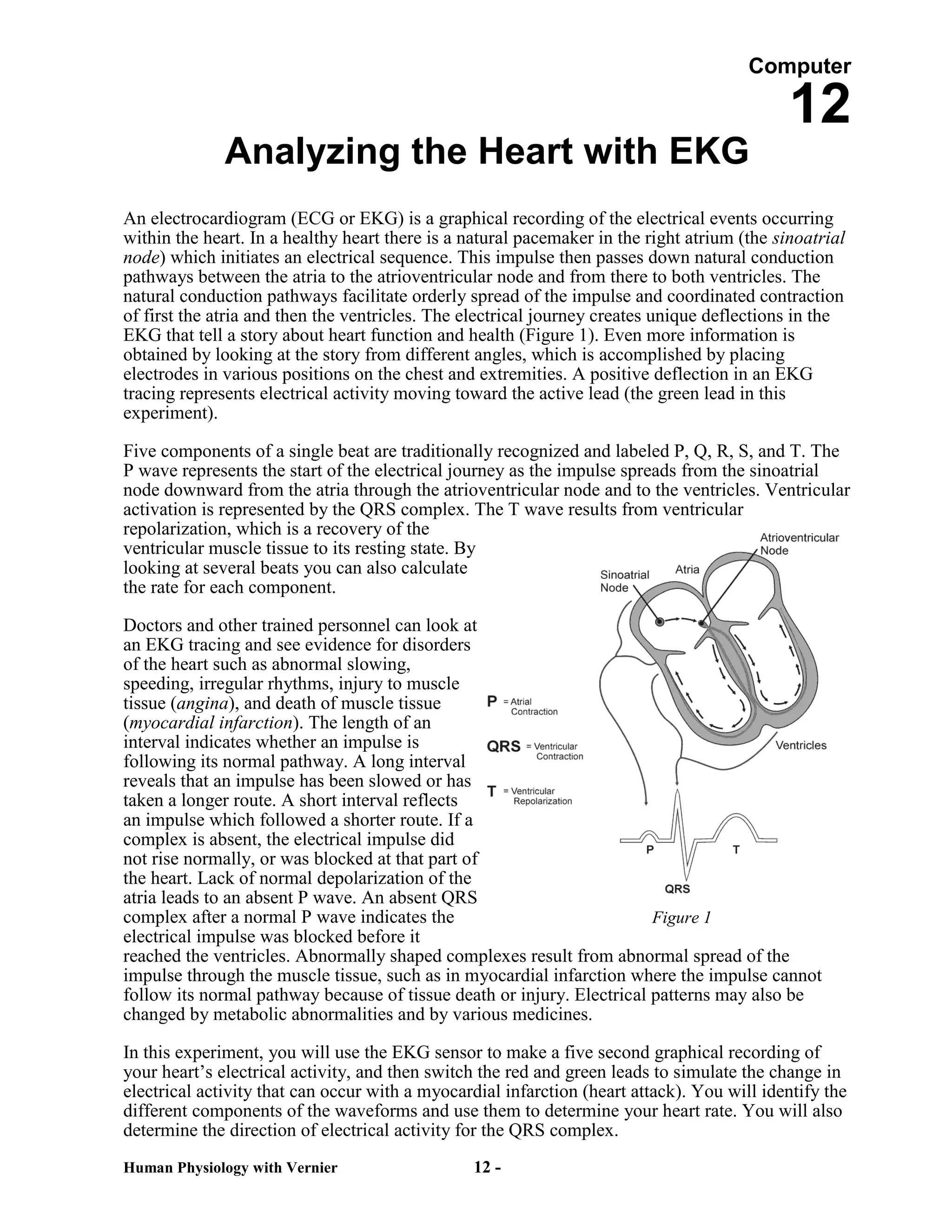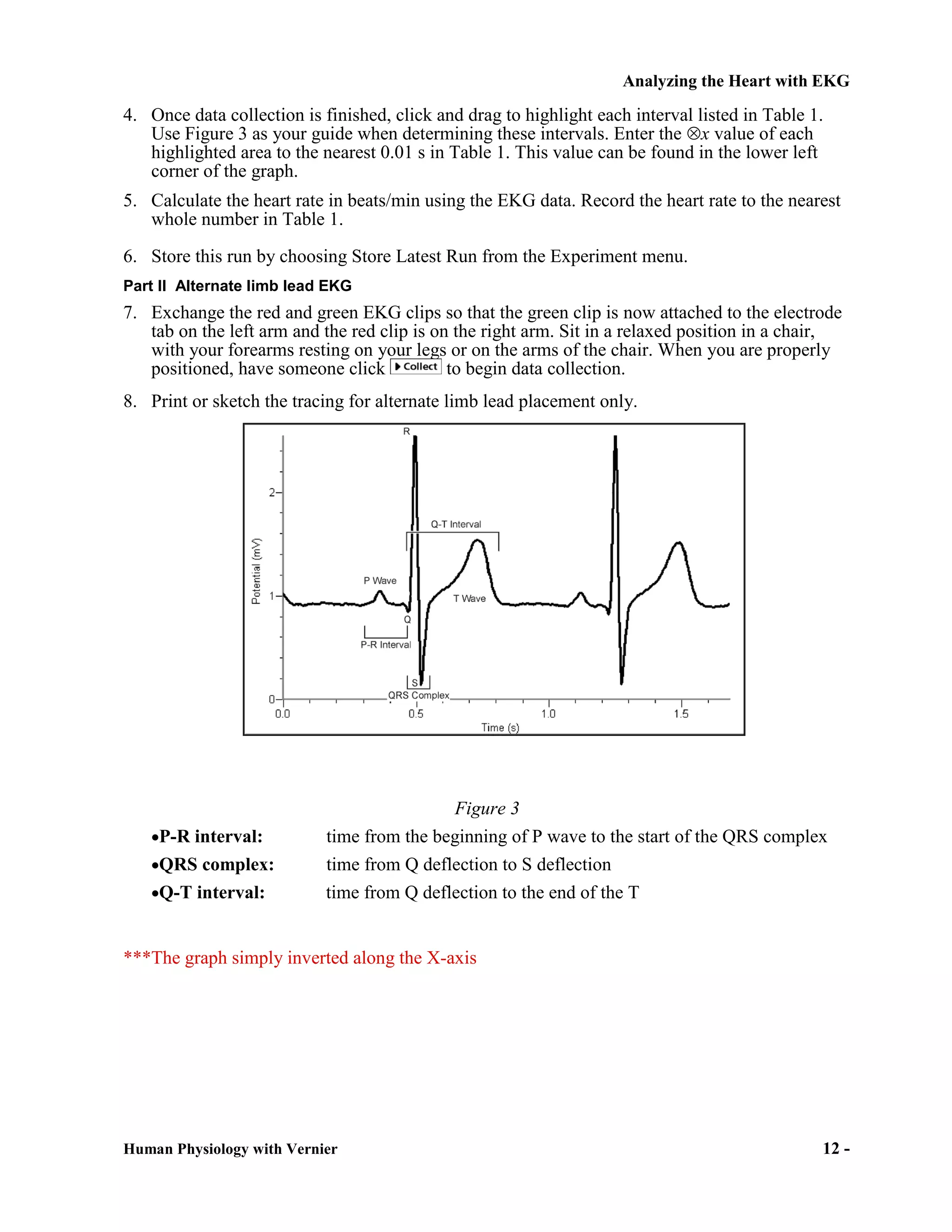An electrocardiogram (EKG or ECG) records the electrical activity of the heart over time. The main components of a heartbeat are labeled P, Q, R, S, and T waves. The P wave represents electrical activity spreading through the atria, while the QRS complex represents ventricular activation. The T wave occurs as the ventricles recover. By examining intervals between these waves, as well as their presence, shape, and consistency, doctors can detect disorders like abnormal heart rhythms or damage to heart muscle tissue. In this experiment, students will record their own EKG, identify the wave components, and calculate their heart rate. They will also compare EKGs recorded from different electrode placements on the arms





